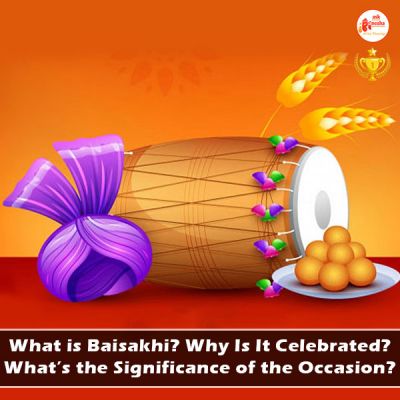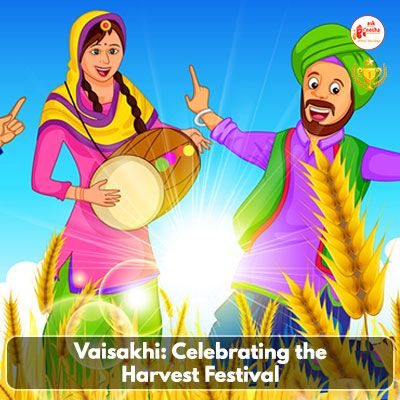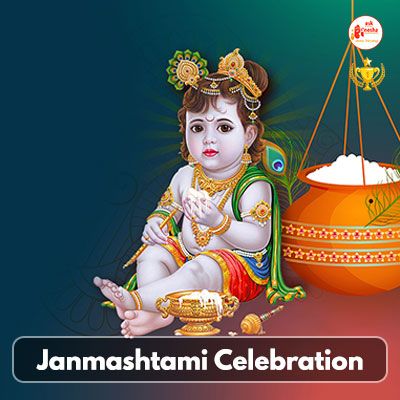Baisakhi, is a spring time festival that is celebrated in various regions of India and among the Sikh community around the world. The festival has both historical and religious significance. Historically, Baisakhi commemorates the establishment of the Khalsa Panth by Guru Gobind Singh in 1699, a significant event in Sikh history. Religiously, Baisakhi marks the beginning of the Sikh New Year and is a time for Sikhs to reflect on the teachings of their faith and renew their commitment to their values.
All About the Baisakhi Festival
The occasion is typically celebrated on April 13 or 14 every year, depending on the Indian lunar calendar. It is a joyous occasion that includes parades, music, dancing, and the sharing of food with family and friends. Sikhs often gather at gurdwaras (Sikh places of worship) to offer prayers and participate in community meals known as langars.
Baisakhi is celebrated with great enthusiasm and fanfare in the Indian state of Punjab, which has a large Sikh population. The celebrations typically start with a procession called Nagar Kirtan, in which Sikhs carry the Guru Granth Sahib (the holy book of the Sikhs) on a float or palanquin, accompanied by devotional music and singing. The procession passes through the streets of the town or city, and people come out to offer prayers and make offerings.
Also Read: Vaishaka Purnima
In addition to its religious significance, it has agricultural and cultural significance. In Punjab, Baisakhi marks the harvest season and the start of a new farming cycle. Farmers thank God for the good harvest and pray for a successful new year. The festival also has cultural significance, as it is a time for people to dress up in traditional Punjabi clothes, eat festive food, and participate in cultural events like bhangra and gidda dances.
Outside of India, the occasion is celebrated by Sikh communities around the world. In Canada and the United Kingdom, for example, Baisakhi parades are held in major cities, and the festival is recognized as a public holiday in some provinces and territories. The celebrations often include cultural performances, martial arts displays, and free food for all attendees. The Festival, so to say, is a significant festival that has historical, religious, agricultural, and cultural significance for Sikhs and Punjabis around the world.
Significance of Baisakhi
Baisakhi has significant historical, religious, cultural, and agricultural significance for the Sikh community and Punjabi people. Here are some of the key aspects of its significance: Historical Significance: Baisakhi commemorates the establishment of the Khalsa Panth, the community of baptized Sikhs, by Guru Gobind Singh in 1699. On this day, Guru Gobind Singh baptized the first five Sikhs and declared them to be the Panj Pyare, or the five beloved ones, who would lead the Khalsa community. The Khalsa was created to defend the Sikh faith and stand up against oppression, and its establishment is a key moment in Sikh history.
Religious Significance: Baisakhi is also a religious festival that marks the beginning of the Sikh New Year. It is a time for Sikhs to reflect on the teachings of their faith and renew their commitment to living a life of service, justice, and devotion to God. On this day, Sikhs gather at gurdwaras (Sikh places of worship) to offer prayers, listen to kirtan (devotional music), and participate in langars (community meals).
Agricultural Significance: In Punjab, Baisakhi marks the beginning of the harvesting season and the start of a new farming cycle. Farmers thank God for the good harvest and pray for a successful new year. Baisakhi is a time to celebrate the bounty of nature and the hard work of farmers. It is a significant festival that celebrates the rich history, culture, and traditions of the Sikh community and Punjabi people. It is a time to come together with family, friends, and community members to celebrate, reflect, and give thanks.
History of Baisakhi
The history of of the occasion is deeply rooted in the Sikh faith and culture. Here are some key events and historical moments associated with Baisakhi:
Guru Nanak's Birth: Guru Nanak, the founder of the Sikh faith, was born in 1469 on the day of Baisakhi. Sikhs celebrate this occasion by visiting gurdwaras and offering prayers.
Baisakhi of 1699: The most significant event in Vaisakhi's history is the establishment of the Khalsa Panth by Guru Gobind Singh in 1699. On this day, Guru Gobind Singh called together thousands of Sikhs at Anandpur Sahib and asked for volunteers to give their lives for the Sikh cause. Five brave Sikhs stepped forward, known as the Panj Pyare, and Guru Gobind Singh initiated them into the Khalsa Panth by giving them Amrit, the nectar.
Jallianwala Bagh Massacre: Another significant event associated with Baisakhi is the Jallianwala Bagh massacre, which occurred on April 13, 1919. British troops fired on a peaceful gathering of unarmed Indians who had gathered to celebrate it in the Jallianwala Bagh in Amritsar, killing hundreds of people. This event sparked outrage and further strengthened the Indian independence movement.
Baisakhi is also an agricultural festival that marks the start of the harvest season in Punjab. Farmers celebrate the occasion by giving thanks for the good harvest and praying for a prosperous new year. Overall, the history of Vaisakhi is closely tied to the Sikh faith, culture, and history. It is a time to reflect on the rich legacy of the Sikh community and to celebrate its contributions to society.
Also Read: Guru Nanak jayanti
Importance of Baisakhi in Indian society
Baisakhi holds great importance in Indian society, especially in the northern state of Punjab where a large number of Sikhs reside. Here are some of the key reasons why it is important in Indian society:
Celebration of the Harvest: It marks the beginning of the harvest season in Punjab, and it is an occasion to give thanks for the good harvest and pray for a prosperous new year. It is a time for farmers to celebrate the fruits of their labor and for people to enjoy the bounty of nature.
To Commemorate Sikh History: Baisakhi has significant historical importance for the Sikh community, as it commemorates the establishment of the Khalsa Panth by Guru Gobind Singh in 1699. Sikhs celebrate this occasion by participating in religious ceremonies, offering prayers, and reflecting on the teachings of their faith.
Community Bonds: People celebrate their shared culture and heritage on this occasion. It is a time for families and friends to gather, dress up in traditional clothes, and participate in cultural events like bhangra and gidda dances. Baisakhi strengthens social bonds and fosters a sense of community.
National Integration: While Baisakhi is a festival celebrated primarily by Sikhs, it is also a national festival that promotes national integration and unity. People of all religions and communities come together to participate in the festivities and enjoy the cultural events.
Is Baisakhi a Religious Festival?
Baisakhi, is a festival that has both religious and cultural significance.
Religiously, Baisakhi is an important day for Sikhs, who celebrate it as the Sikh New Year and the day of the formation of the Khalsa, a Sikh warrior community. On this day in 1699, the tenth Sikh Guru, Guru Gobind Singh, established the Khalsa Panth (community of the pure) and initiated the first five members, known as the Panj Pyare (beloved five), into the Khalsa.
Culturally, Vaisakhi is celebrated by people of different religions and communities in India and other parts of the world as a harvest festival. It marks the beginning of the new solar year and the onset of the harvest season in the northern parts of India.
How is Vaisakhi Celebrated?
The way Vaisakhi is celebrated varies depending on the region and community, but here are some common ways in which it is celebrated:
Sikh Processions: In Sikh communities, processions are taken out from Gurdwaras (Sikh places of worship) which are accompanied by singing of hymns and prayers. This is followed by a community meal called langar, which is open to all and serves vegetarian food.
Harvest Celebrations: In Punjab and other parts of northern India, the occasion marks the onset of the harvest season. People celebrate by dancing, singing, and dressing up in colorful traditional clothes. They also prepare and eat special foods, such as sarson ka saag (mustard greens) and makki ki roti (corn bread).
Fairs: In some places, Vaisakhi fairs are organized, which include cultural activities, games, and food stalls. People come together to celebrate and have fun.
Community Service: In Sikh communities, Vaisakhi is also a day for seva (selfless service). People participate in community service activities such as cleaning the streets, distributing food to the needy, and offering free medical check-ups.
Akhand Path: In Sikh homes and Gurdwaras, an Akhand Path (continuous reading) of the Guru Granth Sahib, the Sikh holy scripture, is held leading up to Vaisakhi. The reading usually takes three days and ends on Vaisakhi day.
To conclude, Vaisakhi is a joyous occasion that is celebrated with a lot of enthusiasm and community spirit.























 Translate
Translate